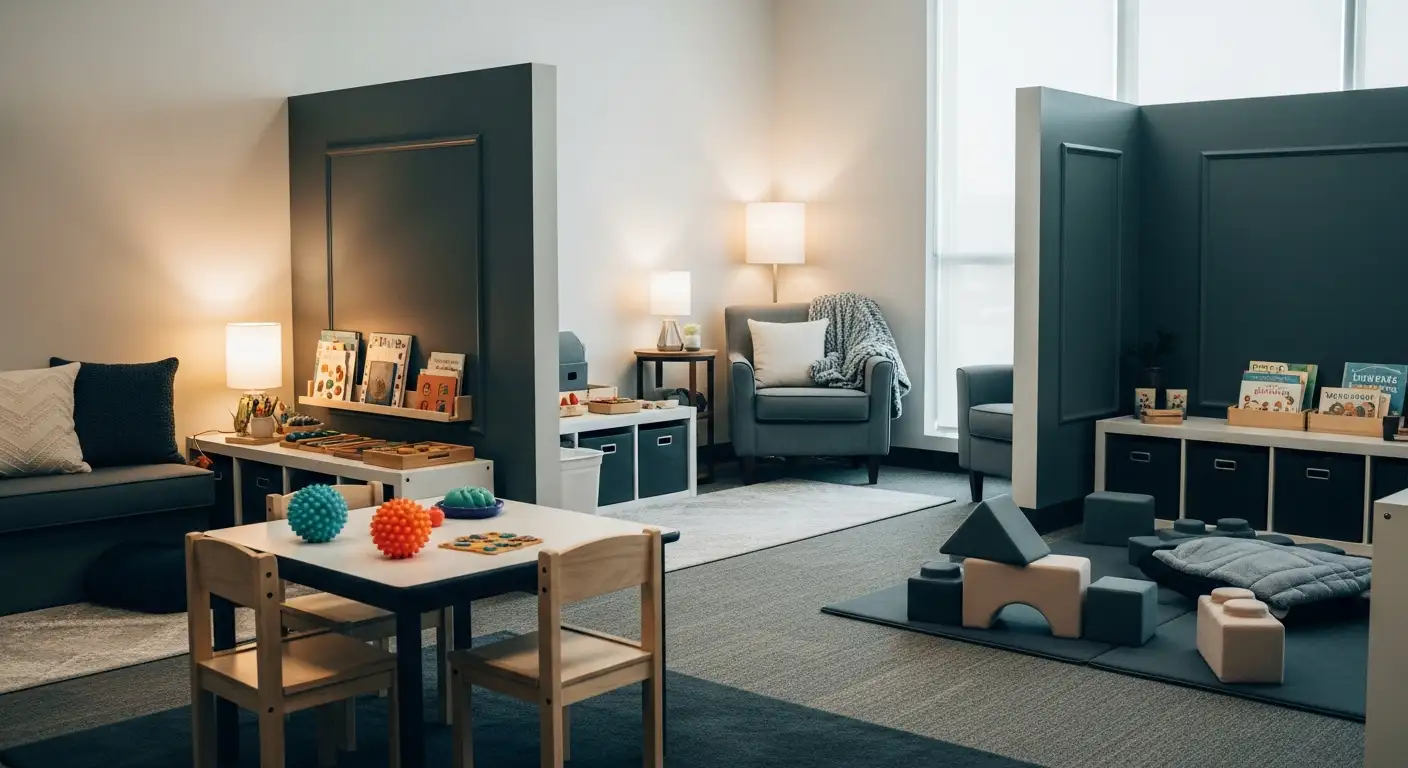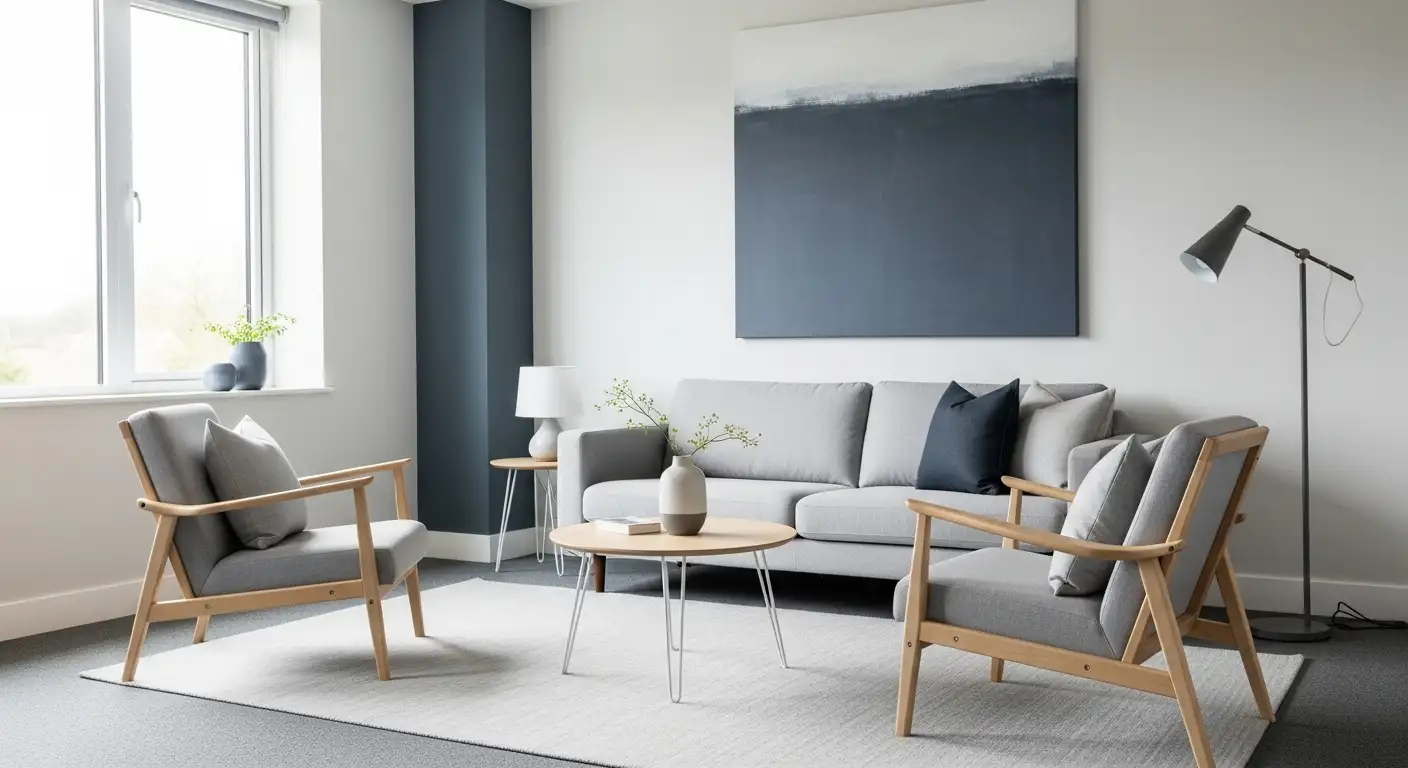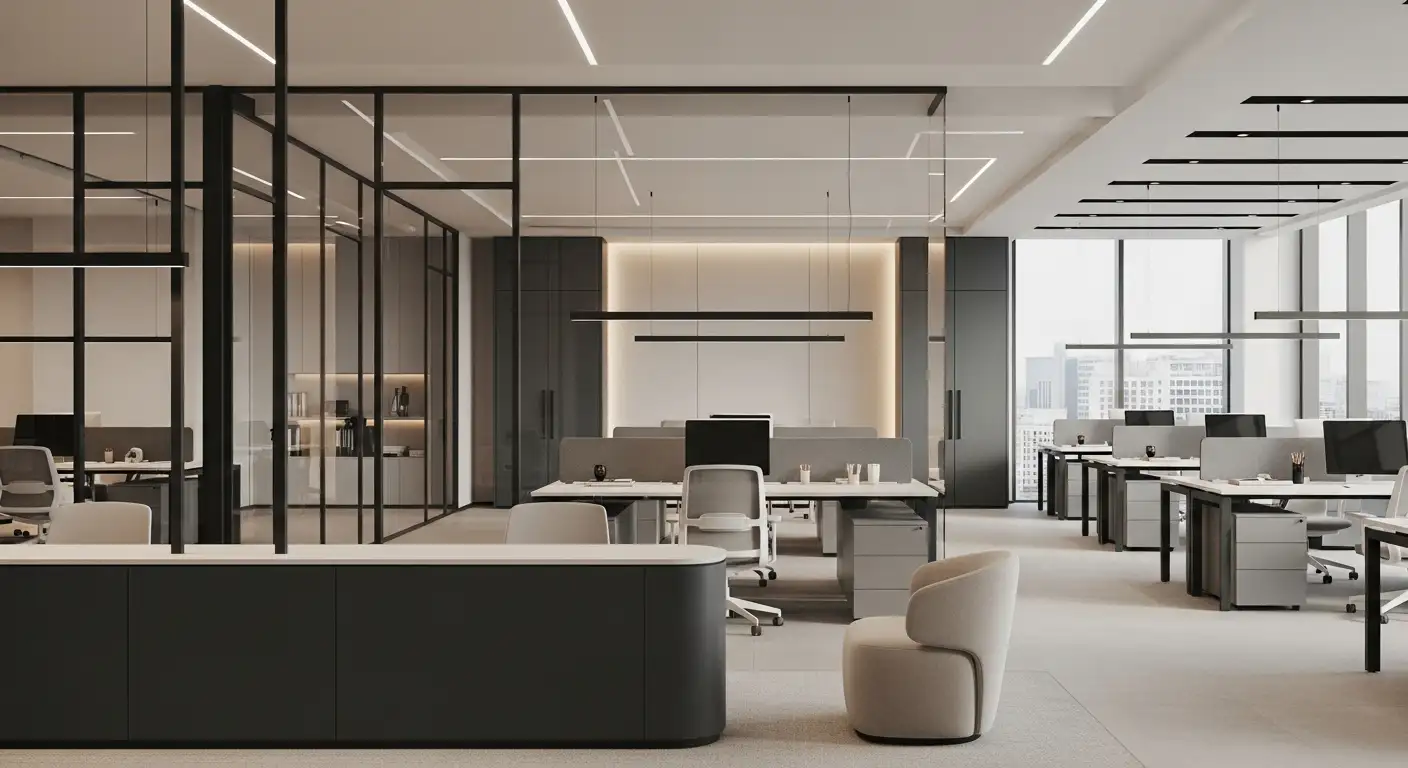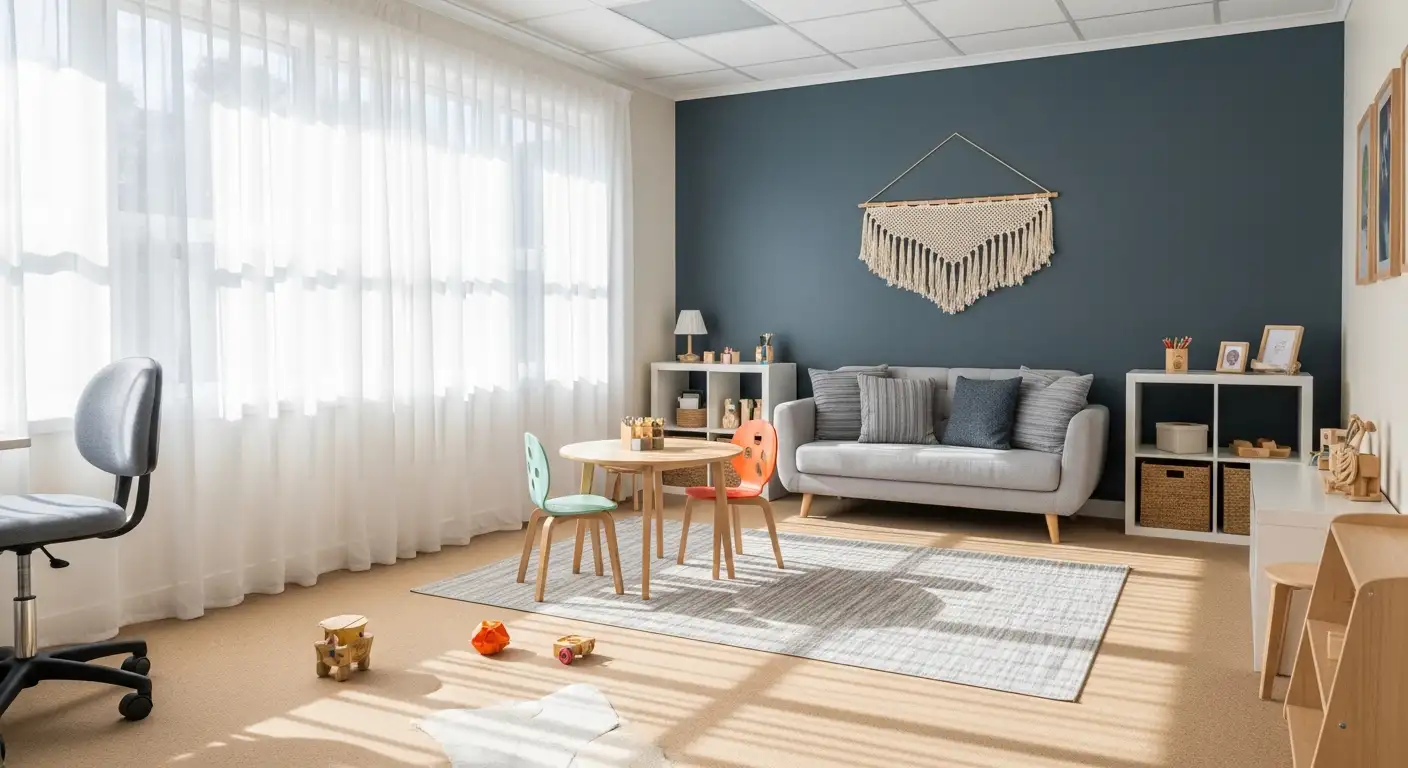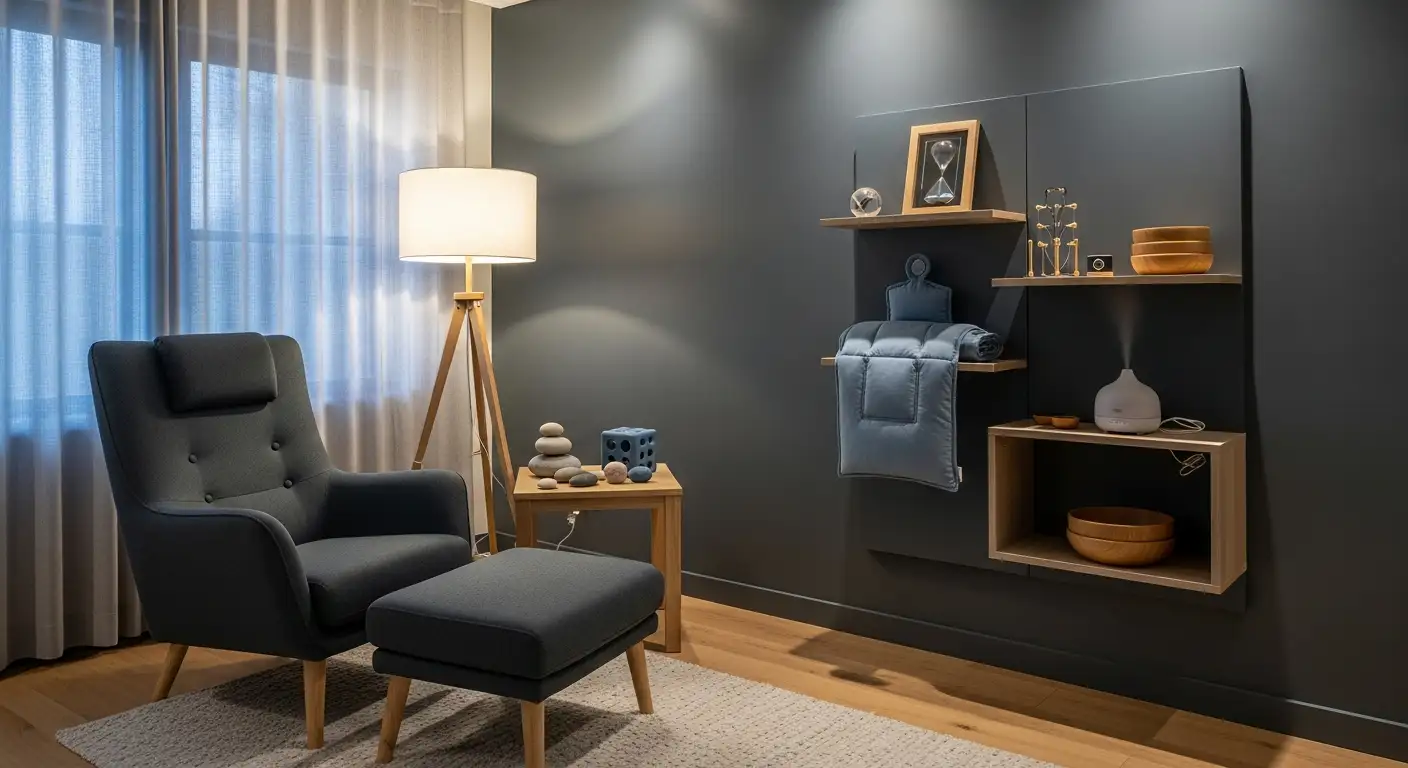Understanding the Need for Safe Spaces
Creating a safe space for individuals with autism involves more than just aesthetics—it requires understanding and addressing the unique sensory and emotional needs of autistic people. With the prevalence of autism spectrum disorder (ASD) on the rise, it is crucial for caregivers, educators, and communities to recognize the impact of environment on the well-being of autistic individuals. This article explores the essential elements of autism-friendly spaces, practical tips for implementation, and the importance of collaboration with autistic individuals in the design process.
Defining a Calm Space for Autism

What defines a calm space for individuals with autism?
A calm space for individuals with autism is essential for their emotional regulation and comfort. It is defined by its sensory-friendly characteristics, which aid relaxation and help to manage anxiety. Here are some primary elements that contribute to a calming environment:
- Quiet Environment: The space should be free from loud noises and overwhelming sounds. This helps prevent sensory overload, which can be distressing.
- Soft Lighting: Utilizing soft or natural light can create a soothing atmosphere. Bright, harsh lights may be overwhelming and need to be minimized.
- Comfortable Seating: Providing soft seating, such as bean bags or cushions, promotes relaxation and encourages individuals to unwind in their safe space.
- Personal Touch: Allowing for personalization, such as incorporating favorite colors, toys, or familiar objects, helps create a sense of ownership and security in the environment.
- Visual Clarity: Keeping the area visually uncluttered is vital. Reducing unnecessary distractions ensures that individuals can focus on self-soothing rather than being overwhelmed.
- Soothing Elements: Adding calming scents, such as lavender, or calming sounds, like soft music, can further enhance the soothing environment.
In summary, a calm space tailored to the unique needs of individuals on the autism spectrum can significantly enhance their comfort and emotional well-being.
Designing Autism-Friendly Spaces

What is an autism-friendly space?
An autism-friendly space is meticulously designed to meet the diverse sensory and communication needs of autistic individuals. This type of space typically emphasizes quiet areas with controlled lighting and sound levels, crucial for reducing sensory overload. Bright lights and loud noises can trigger discomfort, making it essential to create an atmosphere that fosters ease and calmness.
To enhance accessibility, these spaces often incorporate various sensory tools such as noise-canceling headphones or tinted sunglasses, allowing individuals to tailor their sensory experiences according to their preferences. Additionally, providing clear information about the layout of the venue and sensory elements prepares visitors, reducing anxiety before they even enter.
Staff training plays a pivotal role in fostering autism-friendly environments. Equipped with knowledge about autism spectrum disorder, team members can offer informed support, ensure understanding, and increase compassion towards visitors’ unique experiences. Furthermore, implementing designated autism-friendly hours can create opportunities for a more inclusive and accommodating experience.
The ultimate goal of these adaptations is simple: create a supportive environment that promotes comfort, accessibility, and well-being for autistic individuals, their companions, and the broader community.
Reducing Anxiety Through Sensory Understanding

How can understanding sensory needs reduce anxiety for autistic individuals?
Understanding sensory needs can significantly reduce anxiety for autistic individuals by creating tailored environments that minimize sensory overload, which is often a source of distress. Many individuals on the autism spectrum experience heightened sensitivities to sensory inputs including sound, light, and textures.
By recognizing hypersensitivity and hyposensitivity, caregivers and professionals can make small adjustments in the environment. For example:
- Reducing noise: Implementing noise-canceling headphones or creating quiet zones can aid in managing excessive auditory stimuli.
- Dimming lights: Soft or natural lighting can help mitigate stress induced by harsh, bright lights.
- Simplifying surroundings: Keeping spaces organized and clutter-free can lessen feelings of overwhelm for those sensitive to visual distractions.
Sensory therapies, such as using calming objects like weighted blankets or fidget toys, can enhance emotional regulation and coping mechanisms. These strategies allow autistic individuals to manage their responses to overwhelming stimuli more effectively.
Additionally, creating a sensory profile for each individual aids in identifying specific changes needed based on personal preferences. This personalized approach not only reduces anxiety triggers but fosters a sense of ownership and comfort, crucial for the well-being of autistic individuals. Addressing sensory processing issues is essential for improving daily life, ultimately leading to decreased anxiety levels and promoting better emotional health.
The Role of Collaboration in Space Design

Why is collaboration with the autistic individual important in designing spaces?
Collaboration with autistic individuals in the design of their spaces is critical for creating environments that address their unique sensory and emotional needs. By involving them in the planning process, designers can ensure that the resulting spaces truly reflect their preferences and requirements. For instance, the choice of colors, textures, and lighting can significantly impact their comfort levels—areas designed with their feedback can promote relaxation and grounding against sensory overload.
Emphasizing sensory-friendly spaces fosters inclusivity, as it allows individuals on the autism spectrum to engage positively with their surroundings. These feedback-informed designs prioritize elements like noise reduction, soft lighting, and accessible layouts, ultimately leading to enhanced experiences not only for autistic individuals but for everyone in the community.
Furthermore, this collaborative approach adheres to the principles of Universal Design, which strive to create environments accessible and functional for all. Regular input from autistic individuals not only enhances their comfort and reduces anxiety but also bridges gaps in understanding—contributing to a more empathetic world. This collaboration is a vital key in crafting supportive spaces that nurture emotional regulation and promote a sense of belonging.
Ensuring Safety and Comfort at Home
How can parents and caregivers ensure safety and comfort at home for children with autism?
To ensure safety and comfort at home for children with autism, parents and caregivers should create a designated safe space tailored to the child's unique needs. This safe space acts as a retreat from overwhelming stimuli, effectively promoting relaxation and emotional regulation.
Here are some considerations for setting up a sensory-safe area:
- Designated Locations: Spaces like swing chairs, hammocks, or quiet corners of a room can serve as calming environments.
- Customized Solutions: For more permanent answers, parents might think about creating garden playhouses or purpose-built sensory rooms. Spaces under stairs or beds can also work well for cozy retreats.
- Personalized Elements: Incorporate the child’s favorite items, textures, and colors into the safe space. This personal touch can help foster a sense of ownership.
- Calming Components: Include items such as weighted blankets, noise-canceling headphones, and soft lighting to cater to sensory sensitivities.
By tailoring these environments to support self-regulation and provide a haven from sensory overload, parents can greatly enhance their child's overall well-being, ensuring they feel safe and comfortable at home.
Fostering Communication and Inclusion
How can effective communication and inclusion be fostered in various settings for autistic individuals?
Effective communication and inclusion for autistic individuals can be significantly enhanced by tailoring activities and environments to meet their sensory needs. This involves creating accessible community programs that facilitate participation alongside peers, allowing for meaningful engagement.
Training staff and peers to recognize and accept diverse communication styles is crucial. By promoting awareness about autism, we can break down barriers that might isolate autistic individuals. This can be further supported through community education initiatives, helping to foster a more inclusive atmosphere.
Clear and structured communication strategies, such as using direct language and visual aids, are essential. These methods help to alleviate social communication challenges, making it easier for autistic individuals to express themselves and understand expectations.
Moreover, support systems in educational and healthcare settings play a vital role. By providing tailored assistance and promoting flexible interactions, these environments can enhance the overall quality of life for individuals on the autism spectrum.
Summary of Inclusion Strategies
Creating Sensory Rooms
How can you create a sensory room for autistic individuals?
Creating a sensory room for autistic individuals involves careful planning to ensure it meets their varied sensory needs while providing a calming atmosphere. Here are several elements to consider when designing an effective sensory room:
- Diverse Sensory Tools: Include a variety of sensory tools such as weighted blankets for deep pressure, sensory toys that promote engagement, and fidget items that can aid concentration.
- Adjustable Lighting: Use soft and adjustable lighting options to manage visual sensitivities. Calming lights help create an inviting space without overwhelming brightness, allowing individuals to relax comfortably.
- Organized Storage: Implement organized storage areas to minimize distractions and make it easier for individuals to navigate the space. Clear and labeled storage helps autistic individuals understand where items are located, enhancing the overall experience.
- Defined Areas: Create distinct zones within the sensory room to cater to different activities, such as quiet areas for relaxation, spaces for movement like swings, and play areas filled with tactile materials. This structure helps in managing sensory experiences effectively.
- Calming Color Schemes: Choose calming color palettes for walls and furnishings to promote a soothing environment. Soft blues, greens, and neutrals can help in reducing potential overstimulation.
- Involvement and Training: Importantly, involve autistic individuals in the design process, allowing them to convey their preferences. Staff and caregivers should also be trained to understand and support sensory needs effectively.
Creating a sensory room tailored to an individual's specific requirements can significantly enhance their emotional regulation and improve well-being.
Resources for Autism-Friendly Environments
What are some resources for sensory tools and materials that enhance autism-friendly environments?
Creating a supportive environment for individuals with autism often hinges on utilizing the right sensory tools and materials. Here are some effective resources:
- Sensory Lighting: Items such as sensory lamps and calming projectors can transform spaces by providing soft, soothing light that reduces overstimulation.
- Tactile Toys: Fidget tools and sensory bins not only promote concentration but also aid in self-regulation, helping to ease anxiety in individuals with sensory sensitivities.
- Calming Elements: Weighted blankets are beneficial for providing deep pressure, while noise-canceling headphones are essential in managing auditory overstimulation. These tools encourage a sense of security and comfort.
- Flexible Seating: Incorporating options like bean bags or balance balls enables better movement and can contribute to stress relief during learning or play sessions.
- Visual Supports: Utilizing visual schedules and choice boards fosters predictability and helps individuals understand their routines, easing transitions that may trigger anxiety.
- Classroom Resources: Various online stores specialize in sensory toys designed specifically for educational settings, enhancing engagement and reinforcing learning across sensory categories.
Each of these resources plays a crucial role in building autism-friendly environments that prioritize comfort and emotional regulation, thus enriching the experience for individuals with autism.
Educational Resources for Enhancing Quality of Life
What educational resources are available to improve the quality of life for individuals on the autism spectrum?
Numerous educational resources are available to enhance the quality of life for individuals on the autism spectrum. These resources focus on essential areas such as communication skills, emotional regulation, and life skills training, all crucial for fostering independence.
- Life Skills Classes: These classes teach individuals how to perform daily living activities, such as cooking, budgeting, and personal hygiene, which are vital for self-sufficiency.
- Independent Living Programs: Designed for older teens and adults, these programs offer skills training that facilitates a smoother transition into adulthood.
- Visual Supports: Tools like visual schedules help individuals understand and manage their daily routines, reducing anxiety associated with transitions.
Organizations such as the California Autism Professional Training and Information Network (CAPTAIN) provide essential training for educators and caregivers, improving their understanding of autism-related challenges. The Autism Focused Intervention Resources & Modules (AFIRM) is another significant resource that offers guidance on implementing evidence-based practices.
Transition planning resources and specialized apps also play a role in enhancing educational outcomes for individuals with autism. Overall, these resources collectively contribute to improving independence and overall quality of life for individuals with autism and their families.
Creating Inclusive and Empowering Spaces
Designing safe spaces for individuals with autism is not merely about reducing harm but is fundamentally about enhancing quality of life through thoughtful, inclusive environments. By understanding sensory needs, fostering communication, and collaborating with autistic individuals in the design process, we create opportunities for empowerment and independence. Whether through educational resources, sensory rooms, or tailored home environments, the goal is to support autistic individuals in navigating the world with confidence and comfort. These efforts require community engagement, continued learning, and a commitment to inclusivity, reminding us of the importance of creating spaces where everyone can thrive.
References
- Creating a Sensory Safe Space - Madison House Autism Foundation
- How To Create A Safe Space For Kids With Autism In Your Program
- How to Create a Calming Area - National Autism Resources
- Safe spaces | Autability
- Making safe spaces: disability activity | Raising Children Network
- 5 Tips for Creating a Safe Home for Your Child with Autism
- How to Create a Safe Space for Kids with Autism?
- Creating a Safe and Supportive Space for Autism - Magnet ABA
- Creating Safe Spaces for Autism - My Team ABA


